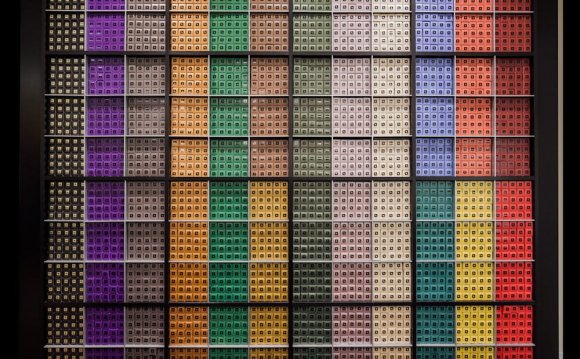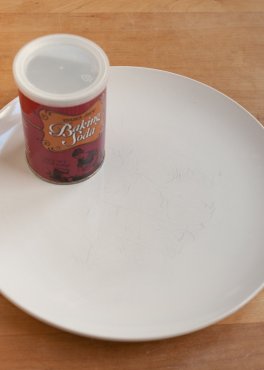
If you have owned your white dishes for any length of time, by now you've probably started noticing a gradual accumulation of stubborn gray scuff marks marring that pristine, glossy white surface. These scuff marks don't seem to respond to either repeat cycles through the dishwasher or determined hand scrubbing.
Before you resign those plates to the back of the cupboard and invest in new dinner party dishes, let me introduce you to my three friends: cream of tartar, baking soda, and Bar Keepers Friend.
Where Do Scuff Marks Come From?
You can blame your enthusiasm for cleaning your plate for all those scuff marks — they're caused by the scraping of silverware across the surfaces of your dishes. They're also truly scuffs, not scratches, which means that the surface of your plate hasn't actually been damaged and the scuff marks are (theoretically) not permanent.
Cheaper dishes and silverware tend to cause scuffs more easily and frequently than higher-end stuff, but even better-quality dishware will collect some scuffs with time.
Three Choices for Removing Scuff Marks
You have three options when it comes to removing these scuffs: cream of tartar, baking soda, and Bar Keepers Friend (or Bon Ami). Cream of tartar and baking soda are fairly mild, as far as abrasives go, and either option works well to remove very light scuffs and lighten darker scuffs.
If your dishes are afflicted with dark, heavy scuffs, however, then Bar Keepers Friend (or Bon Ami) is going to be your new best friend. This stuff is magical. It's a more heavy-duty cleaner than the other two, and it also contains oxalic acid, which helps dissolve rust and other mineral stains.
Removing the Scuffs
Choose your abrasive cleaner, and sprinkle it generously over the surface of your dish. Make a paste by adding a few drops of water and then rubbing gently with a wet dishcloth. Spread the paste all over the surface of your dish, and then let it sit for a minute or two. Scrub the scuffs with your dishcloth until they're gone — light scuffs will come out fairly easily, while heavy scuffs will take a bit of elbow grease. Wash the paste off the dish with soap and water, dry, and you're done.

Baking soda, before cleaning
The Results Speak for Themselves
As you can see in the before-and-after gallery above, baking soda and cream of tartar do a decent job of clearing up minor scuffs and lightening up the big ones — you can see some of the bigger scuff marks still visible in the middle of the plates.
For seriously scuffed dishes, Bar Keepers Friend is the clear winner. I was so happy with how well it worked on my plates that I gave it a go on some very old, and very scratched cereal bowls. I'd forgotten my bowls were ever that white!
Continued Care for Your Dishes
This isn't the kind of deep cleaning you need to do every day, but make a mental note to check up on your dishes every few months. It's easier to scrub out the scuff marks when they're still relatively light than it is once they've had time to set in or accumulate.









